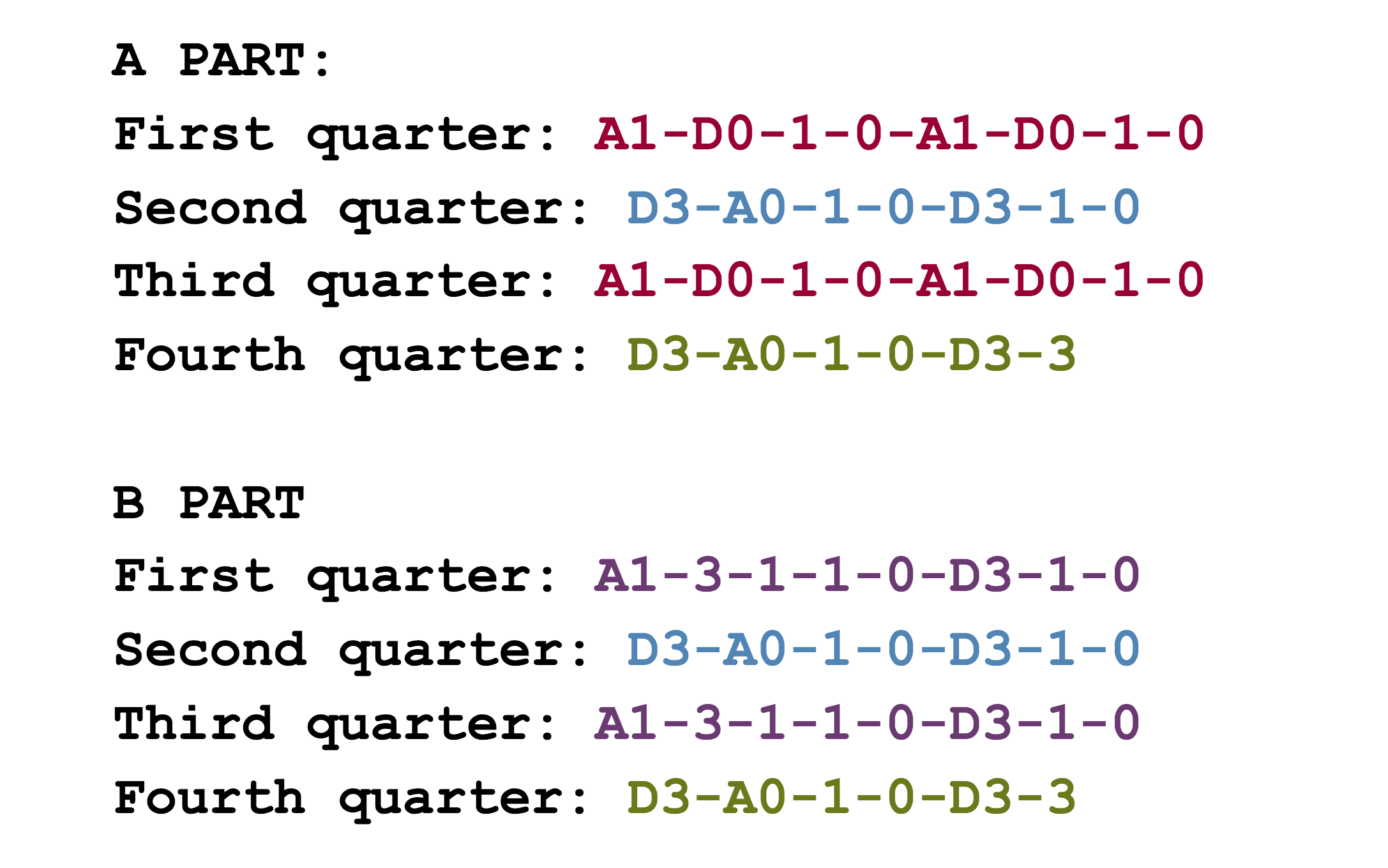Repeating Patterns in Fiddle Tunes
You can learn tunes more easily if you learn to recognize repeating patterns. If you can do that, you lighten the workload for your brain. You’ll also have a better idea of what to practice.
Basically, just notice what parts of a tune are repeated and notice how they are repeated. For example, in Kerry Polka, the first and third quarters of the A part are the same. So instead of having to learn the first quarter and the third quarter, you just have to learn the first quarter. It’s a two-for-one special, or as my Dad likes to say about coupons, it’s a “twofer”.

So after learning the first quarter of a new tune, pause and scan the rest of the tune. See if that quarter (or some piece within it) is repeated later on. This will make it much easier for you to learn the rest of the tune.
But wait! There’s more! Within the first quarter itself there is repetition, because the first four notes are repeated. So learning these four notes yields a high return on your practice investment, because once you learn them, you know half of the A part. Looking for repeating patterns not only helps you learn tunes more easily, it gives you a better idea of how to focus your practice. Plus these parts become like anchor points. They give you confidence as you play through the more challenging parts of the tune.
This is a good example of First Things First. If you solidly learn the first bit of a tune, it helps you on the rest your journey into the music.
Color-coded tabs
For tunes on FiddleHed.com, I developed a system of color-coded tabs to help beginners learn to recognize patterns in tunes.

Notice that repeated parts are the same color.
So when you read this you can say to yourself, “Oh, first quarter of the A part is repeated after second quarter, so I don’t have to learn another the third quarter, I already know it!”
Also notice that the second quarter of the A part is the same as the second quarter of the B part.
Same goes for the fourth quarters of each part.
In this way you can reduce a full tune down to just a few essential parts. So in Kerry Polka, there are four essential parts: the first, third and fourth quarters of the A part and the first quarter of the B part. Everything else is an exact repetition of one of these parts.
Knowing this, you don’t waste as much time and mental energy, which makes your brain happy. And it allows you to focus on getting a better sound.
Tune mapping
I recently came up with another way to show how patterns are repeated in tunes that you can do on your own. I call it Tune Mapping. I’m not sure how useful it is, so if you try it, please let me know how it goes and if it can be improved.
In tune-mapping, we divide a tune’s parts into quarters to help represent how things are repeated. Let’s return to Kerry Polka and make a tune map.

So A1 = the first quarter of the A part. Because the third quarter of the A part is the same as the first, we write “A1 again” instead of “A3”. In this way, you can quickly see that you you only have to learn three unique parts for the A part, and only one unique part for the B part.
The tune map for Kerry Polka tells us:
- The first and third quarters of the A part are the same.
- The fourth quarter of the B part is the same as the fourth quarter of the A part.
- The first and third quarters of the B part are the same.
If that looks too much like algebra for you, then try to use this color-coded diagram:

Let’s look at another example: Bile ’em Cabbage Down – variation 1:
First quarter: D2-2-3-2-1-0-0-3-2-3-A0-1-2-3-0
Second quarter: D2-2-3-2-1-0-2-1-0-1-2-1-0-G2-D0
Third quarter: D2-2-3-2-1-0-0-3-2-3-A0-1-2-3-0
Fourth quarter: D2-1-0-2-1-0-1-2-0 0-0-0
It’s tune map would be:

Or:

Notice that parts that are not repeated are not colored.
If this seems helpful to you then try to use this Tune Mapping Practice which has more examples as well as exercises.
And if tune-mapping still doesn’t make sense, don’t worry. You’ll be able to continue learning music the same way people have learned it for the last 10,000 years before the advent k’Leinberg’s Fiddle Tune Mapping System For Ultimate Life Success was created by Modern Science.
But if Tune Mapping does make sense, please try to use it and make your own tune maps. It will hone your skills of pattern recognition so that you can learn tunes more easily. Let me know you come up with an improvement or new application for it.
Two ways I can help you level up your fiddling
- Sign up for the FiddleHed newsletter below.
- Sign up for the Free Two-week Trial. You’ll get full access to all courses and group lessons. Plus, I’ll send you some free lessons tailored to your current skill level.
Thanks for being here 🙏
